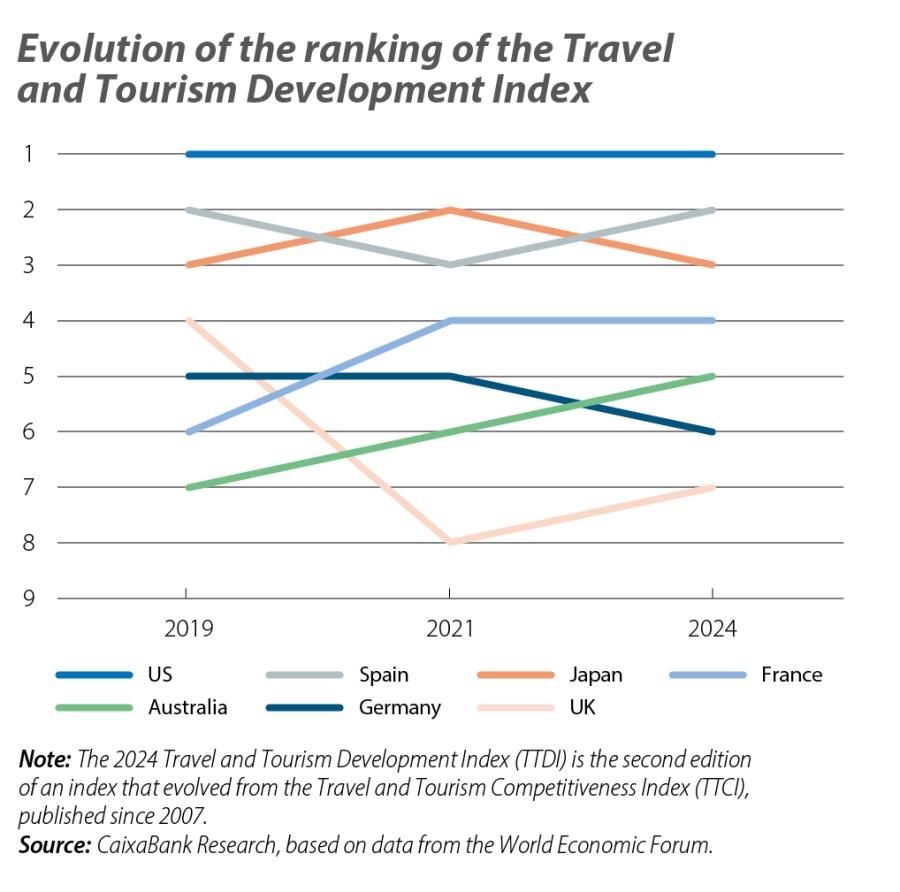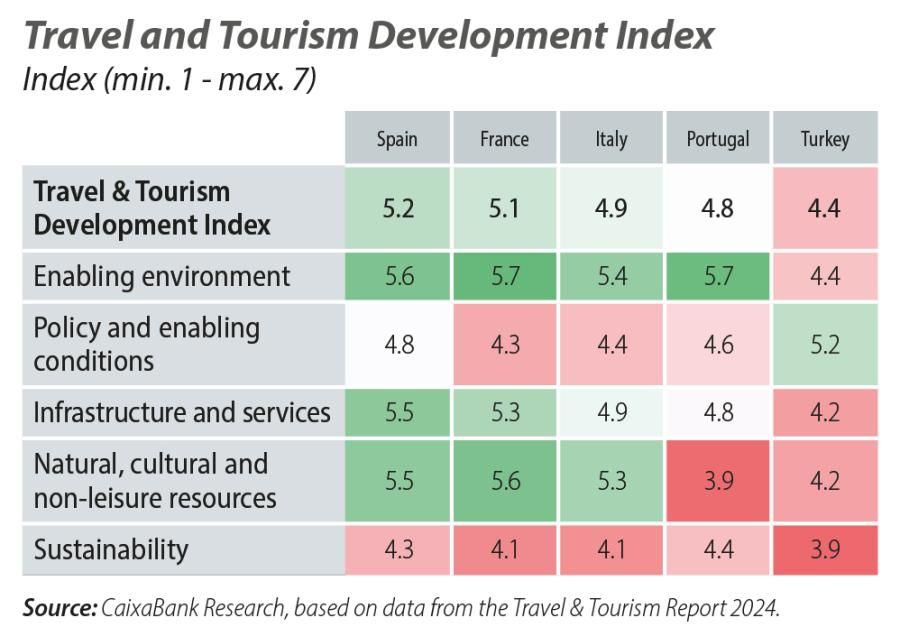
The competitiveness of Spain’s tourism sector: strengths and weaknesses
Beyond the number of visitors, the main challenge for the tourism sector is to continue growing in a sustainable and balanced manner. To this end, it is important to pay attention to other areas of a structural nature, which allow us to make a good diagnosis of the sector’s strengths, in order to continue developing them, as well as the weaknesses that must be addressed in order to make this growth sustainable in the long term.
International tourism has enjoyed significant growth in recent quarters at the global level and is very close to recovering pre-pandemic levels: in Q1 2024 it was just 3% below 2019 levels, according to the UN tourism barometer.1 Spain’s tourism sector was one of the first to recover: among the top 10 destinations in the world, Spain was the second country, after Turkey, to surpass the pre-pandemic number of international tourists. Thus, with 85 million tourists, Spain broke its own historical record and ranked second country in the world for tourist arrivals in 2023, behind France (100 million) and ahead of the US (66.5 million).2, 3
Beyond the number of visitors, the main challenge for the tourism sector is to continue growing in a sustainable and balanced manner. To this end, it is important to pay attention to other areas of a structural nature, which allow us to make a good diagnosis of the sector’s strengths, in order to continue developing them, as well as the weaknesses that must be addressed in order to make this growth sustainable in the long term. A good starting point for such a diagnosis is provided by the Travel and Tourism Development Index (TTDI).4 This is a benchmark index that measures the set of factors and policies that enable the sustainable and resilient development of the tourism sector, providing a comparison between 119 countries. According to the TTDI for 2024, Spain’s tourism sector lies in second place in the world ranking, behind the US and ahead of Japan and France, and it has climbed one place since the previous edition of 2022.
- 1See UN Tourism World Tourism Barometer | Global Tourism Statistics (unwto.org).
- 2See the article «Spain’s tourism sector will continue to grow rapidly in 2024-2025», in the Tourism Sector Report S2 2024.
- 3In terms of international tourism spending, Spain is also second in the world ranking, behind the US and ahead of the UK.
- 4The TTDI is an index developed by the World Economic Forum and its second edition was published in 2024. It has evolved from the Travel and Tourism Competitiveness Index (TTCI), published since 2007.

The TTDI is structured into five sub-indices which, in turn, cover various different aspects (17 in total). Among them, Spain stands out positively in cultural and natural resources, in the facilitating environment (especially in health and hygiene, safety and security, ICT connectivity and the workforce), as well as in most types of infrastructures related to the tourism sector (the country’s airport infrastructure and the quality of its hotels stand out in particular). On the other hand, the sub-index of enabling conditions for tourism and travel is penalised by the country’s price competitiveness. In this factor, Spain is ranked 94th, close to neighbouring countries such as France (102nd), Italy (105th) and Portugal (93rd), due to the presence of countries that are highly competitive in terms of prices (e.g. Turkey ranks 40th in this dimension).
According to the TTDI, the main aspect where Spain’s tourism sector has the most margin for improvement is
in the field of sustainability (Spain is ranked 42nd in this sub-index). Among the different aspects of sustainability considered (environmental, socio-economic and demand-related sustainability), demand is the sphere with the lowest score. In particular, the aspects to be improved upon include the sector’s seasonality, which remains high (despite improving since 2019, it is still high relative to international comparatives), and the high geographical concentration of tourism in cultural and natural attractions.




